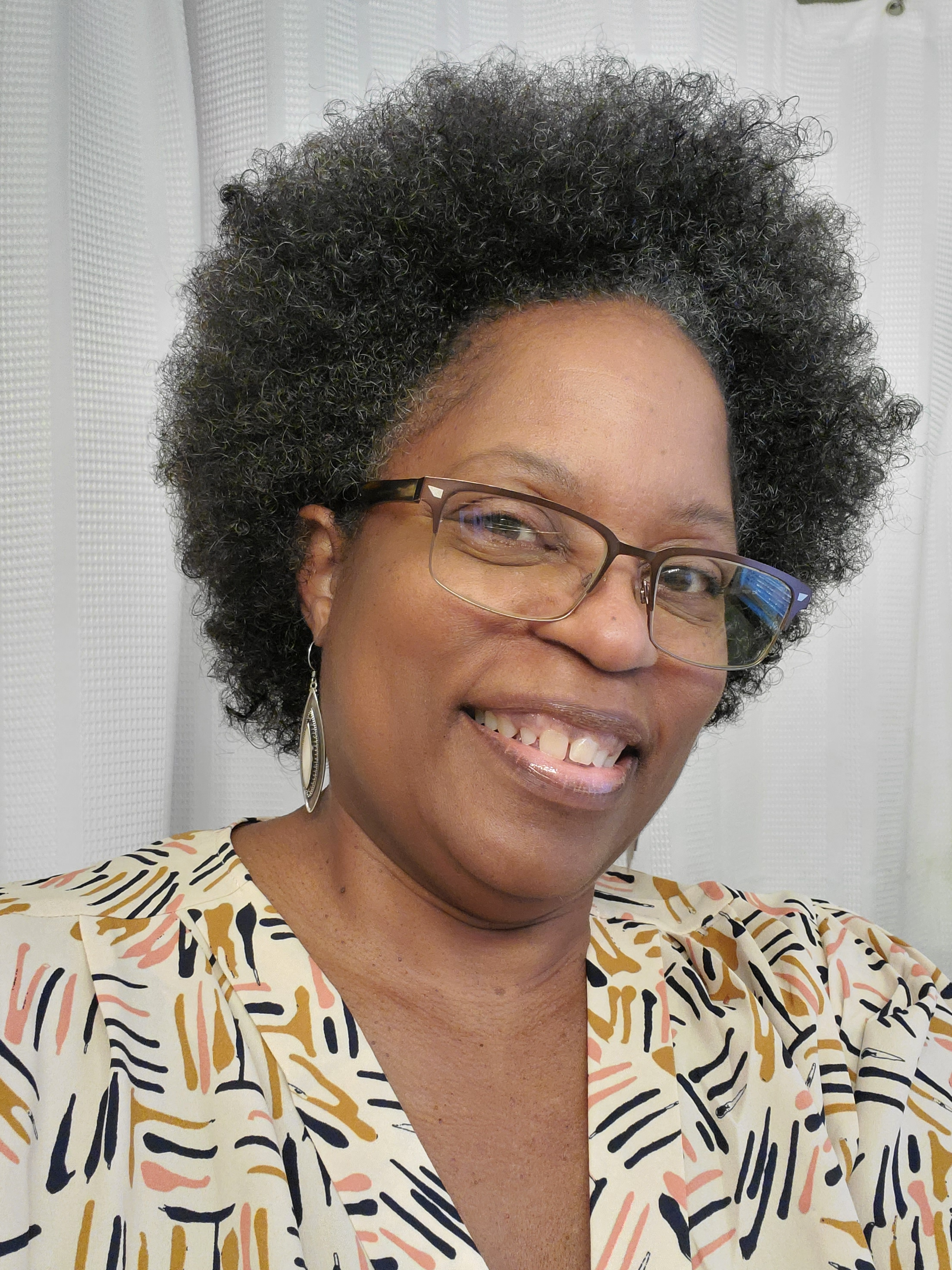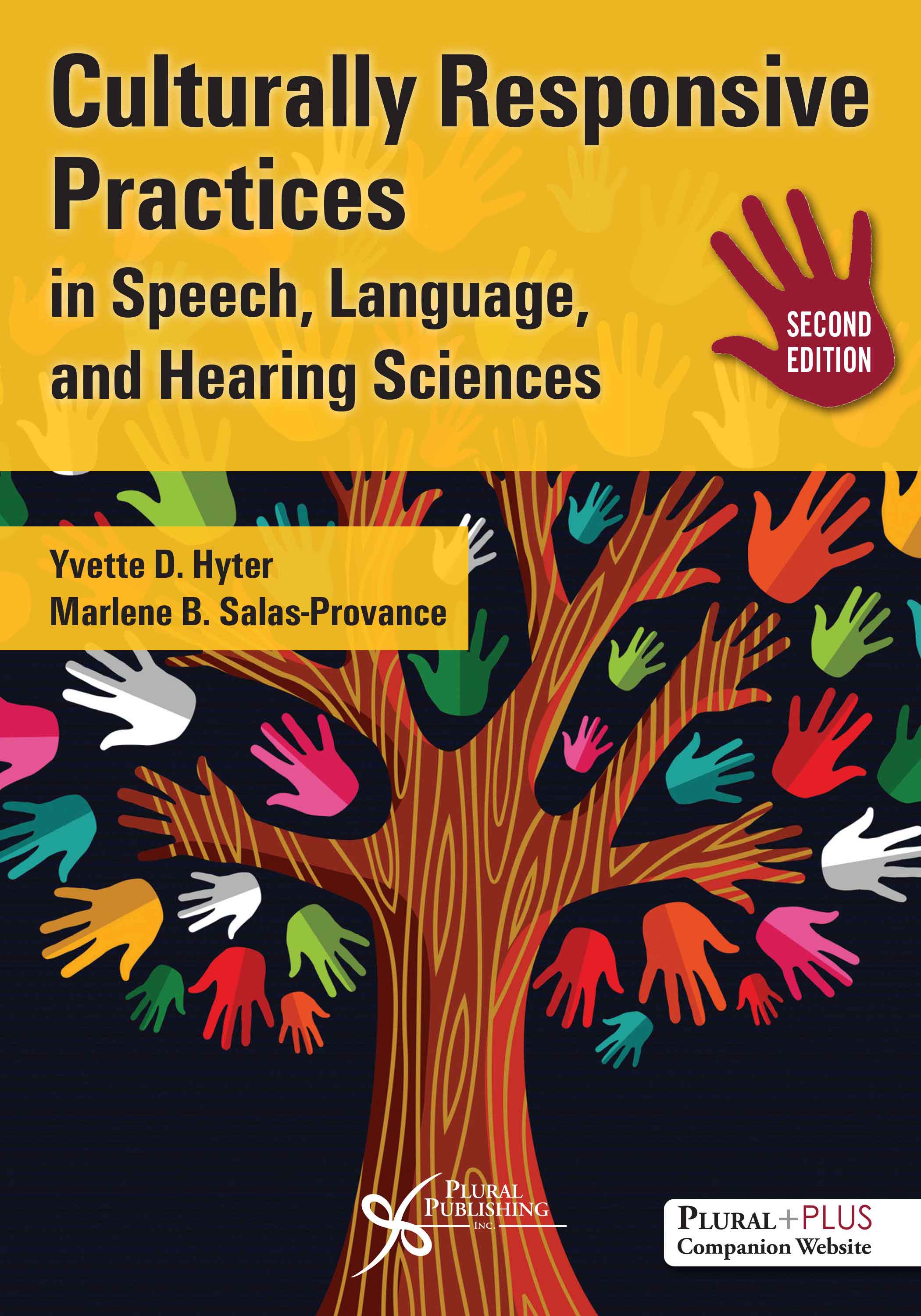
Culturally Responsive Practices in Speech, Language, and Hearing Sciences.
Second Edition
Yvette D. Hyter, Marlene B. Salas-Provance
Details: 448 pages, B&W, Softcover, 7" x 10"
ISBN13: 978-1-63550-650-1
© 2023 | Available
For Instructors
Purchase
Culturally Responsive Practices in Speech, Language, and Hearing Sciences, Second Edition provides an innovative perspective on cultural responsiveness in the field of communication sciences and disorders. It is imperative for clinicians and scientists to be aware of diverse aspects of globalization: how these aspects may affect their own knowledge, strengths, biases, and interventions, as well as the relationships between the communities, families, and individuals with whom they partner in care. This essential textbook will facilitate the creation of knowledge and the development of attitudes and skills that lead to culturally responsive practices. The text presents conceptual frameworks to guide readers toward cultural responsiveness by becoming critically engaged users of culturally responsive and globally engaged practices. The text is focused on speech, language, and hearing, but also draws from theoretical frameworks in other disciplines for an interprofessional, transdisciplinary, and macro practice perspective, and is appropriate for other allied health professions.
New to the Second Edition
- Reorganized chapters and text for a greater flow of information.
- Updated throughout to reflect the current state of research.
- A thoroughly revised chapter on Culturally Responsive Practices using a Human Rights Approach through a Social Justice Lens (Chapter 4)
- Material on Culture and Hearing (Chapter 6) has been updated and expanded
- Key terms are now bolded throughout the text.
- Content has been edited to be more concise for increased readability and comprehension.
- New reflection focus with thought cloud graphic noted to target these areas throughout the book.
Key Features
- Case studies facilitating knowledge and skills regarding culturally and linguistically responsive practices
- Journal prompts and discussion questions challenging individuals to use critical and dialectical thinking
- Real-life activities that can be completed inside or outside the classroom or therapeutic setting
- Suggested readings from the current literature in cultural and linguistic responsiveness and global engagement to build knowledge and skills, and to influence student attitudes
- A PluralPlus companion website with supplementary PowerPoint lecture slides, case studies, exercises, and activities for instructors, as well as study guides, flashcards, and additional readings for students.
From the Foreword
“…This textbook reflects thoughtful consideration of the pedagogical strategies needed to support efficient reader comprehension, retention, and application of information to professional practices. There is consistency across chapters in the format of the information. Each chapter begins with its learning objectives and highlights the key concepts to be learned; it ends with a summary of main points. The written text is clarified and supplemented by the use of tables, figures, graphic symbols and illustrations, textbox highlights, and recommended audio-video media. At the end of each chapter, additional activities and readings are recommended for continued self-exploration ofmaterial. This attention to pedagogical details should have the effect of reducing or at least moderating the information load in a learning experience. …Hyter and Salas-Provance use brief narratives of real and hypothetical cases to connect readers with likely situations outside of the instructional context. One or more such vignettes or scenarios anchor each chapter and can be used for group discussion and individual introspection. …This book offers readers a comprehensive yet condensed coverage of the multicultural issues that are relevant to the CSD professions. Its fresh approach launches our field into a new era of textbook modeling on multicultural issues. We are fortunate that Dr. Yvette D. Hyter and Dr. Marlene B. Salas-Provance have had the vision and energy to create a second edition of their textbook for students, teachers, and scholars in communication sciences and disorders and related fields.”
—Ida J. Stockman, PhD, CCC-SLP, Professor Emerita, Department of Communication Sciences and Disorders, Michigan State University
Yvette D. Hyter and Marlene Salas-Provance Discuss Culturally Responsive Practices in Speech, Language, and Hearing Sciences, Second Edition
Reviews
"The book is well organized. The reorganization of this second edition is more consistent with the “flow” of EBP. Moving the research chapter from chapter 8 to chapter 11 was helpful. ...The authors did a good job connecting current events into the discussions presented in the first edition. The expanded discussion of racism (as it relates to civil unrest brought on by the killing of George Floyd, Breonna Taylor, and countless other Black people in the United States) and health disparities (especially as it relates to COVID-19 and its disproportional impact on the poor and people of color) are tangible examples that the reader can understand, in part, because they witnessed/experienced it. ...This text is an excellent foundational resource for students and practitioners alike. It provides opportunities for self-reflection, which is not only integral to what we do as practitioners during EBP, but is also necessary when providing culturally responsive services. The text is easy to read, provides practical exercises and resources for extended learning, and presents diverse examples/case studies that help the reader apply what is learned."
—Stacey Wallen, PhD, CCC-SLP, Clinical Associate Professor, Department of Communication Sciences and Disorders, Georgia State University
"This text is much stronger and more focused on cultural humility than other texts I have reviewed."
—Mikaely T Schmitz, MS, CCC-SLP, Assistant Professor, Department of Speech and Language Pathology, Concordia University Wisconsin
"I commend the authors on taking on such a substantial work and doing it justice by offering a very balanced examination of the literature, theories, and definitions while also encouraging the students to explore current and historical events to consider their own biases, views, and ways of being while at the same time considering those of the clients they will serve. ...The authors are thorough in their descriptions yet offer some moments of pause for reflection and consideration of the material. ...Overall, I think the strengths of this text are in its robust covering of information pertaining to CSD, DEI, and CLD. The book offers readers/students the foundation by which they can start or strengthen their own journey toward (and in) cultural competence. ...This latest edition again fills a significant void in CSD texts which is a text solely dedicated to the study of CLD within the discipline. The activities and reflections throughout the book are a very helpful teaching tool."
—Shatonda S. Jones, PhD, CCC-SLP, CBIST, Associate Professor, Communication Sciences and Disorders, Rockhurst University
"...Strengths include updated information regarding the COVID pandemic, census stats, racism, individuals of color, telepractice, audism and the addition of hyper links with the chapters. ...The authors did a great job updating the literature. The content matter has been updated to reflect current trends with in the CLD communities."
—Melissa P. Garcia, EdD, CCC-SLP, Clinical Associate Professor, Texas A&M International University
"I think the authors have included current content and it has a nice balance. For instance, in my experience, globalization is a topic that is often overlooked in this field when we are discussing multicultural issues. The authors provide sections about globalization in several of the earlier chapters. Then they provide a very informative chapter at the end. After the reader had gone through culture and power, culture and language, assessment, and intervention they are now able to process the global issues within communication sciences and disorders. ...The addition of the narrative of COVID-19, expansion on globalization, and microaggressions are timely. ...What I love about this textbook is that it truly draws attention to our understanding of cultural responsiveness and what that means regarding intervention and assessment. This book goes beyond talking about specific characteristics of cultural and linguistically diverse populations and how to provide assessment and intervention. The content makes us think about how our belief systems and life experiences impact how we provide speech, language, and hearing services. ...The authors provide evidence to support the topics and provide counter-evidence. This gives the reader various perspectives on issues related to cultural responsiveness. ...I have reviewed various books on multicultural issues in this discipline and this one by far gets to the root of what we need as practitioners and pre-service practitioners in communication sciences and disorders. It allows instructors to think about current issues and generate activities for application and reflection. Although I appreciate what other texts have shared regarding characteristics about specific cultural groups, this book takes the reader beyond that. The reader has to reflect on their own biases and understand that becoming culturally responsive is an ongoing process."
—Karen C. Davis, Ph.D. CCC-SLP, Associate Professor, Speech-Language Pathology and Audiology Program, Middle Tennessee State University
"The opportunities for extended learning and additional resources are extremely helpful to the course instructor and the student. ...Readers are made aware of what has been presented and what is still to come. Cases and definitions from one chapter are regularly referred back to in subsequent chapters. This works well to reinforce previous information and encourage the application of what is known to what is now being presented. This is a real strength of this book. ...Themes are exceptionally well developed throughout. The bold type for defined concepts and terms supports the relevance for the reader. Many of the core principles are discussed and re-applied throughout. ...The content is extremely relevant, current and well supported by referenced materials. There is also good use of ‘non-traditional’ materials (such as news reports, TED talks etc.) which are critical given the current climate and to encourage student use of a wide variety of materials, particularly given the content of the book."
—Sarah Rhiannon Patten PhD, CCC-SLP, Assistant Professor, School of Communication Disorders and Deafness, Kean University
"The book is thorough in covering areas that have long needed discussions on multiculturalism. Better yet, it lays a foundation for why we need to be considering these areas and how to go about it."
—Catherine E. Webb, PhD, CCC-SLP, Assistant Professor, Department of Communication Sciences and Disorders, Augustana College
"...I really like how themes like over and underrepresentation of children from diverse populations is discussed and how interview questions are suggested to better understand clients and their cultural preferences. I also really like the information on bilingualism and language impairment, patient-centered communication, and the information on how it’s difficult to inhibit your dominant language is so important. This book really provides a guide to culturally competent care that is imperative to all future speech and hearing professionals."
—Carol A. Tesssel, PhD. CCC-SLP, Associate Professor, Albizu University
"All chapters and content have purpose in educating the reader on the topic area. If there is not a course dedicated to this topic in the curriculum, this material/text could be utilized across many different courses as students progress in their education. ...There are general references and examples but also those directly relevant to speech, language and hearing sciences. Due to the limited research in the field and the nature of the text, the references from outside the field are necessary. The examples from the field allow the reader to apply what they are learning and explore the application to what they will be doing in their careers. Reading this text will frame and challenge the student’s perspective and open their mind to what types of situations they may encounter while serving their clients and families. ...The reflective exercises, discussion questions, and case studies will stimulate thoughtful conversations among the readers and will allow the readers to consider their bias and opinions. They are specific to the field and directly applicable. Readers will enjoy the links to watch examples online. Although the information is dense and rich in content, the text is reader-friendly and flows well. The text does well to address myths and common misconceptions in an educational and non-judgmental manner. The chapter summaries are helpful for processing the information and further reading suggestions provide quality recommendations for those who are interested. Extended learning activities are a beneficial resource for professors and motivated students."
—Laura B. Willis, MCD, CCC-SLP, Clinical Professor, Department of Communication Disorders, Auburn University (Review of the First Edition)
"The strengths of this book are many. It is a much-needed text to educate professionals about the importance of culturally relevant care. I really liked and cannot speak enough about the interactive exercises which can easily be used as class assignments for any class, but especially for professional issues classes in CSD. ...The reference and further reading listing are excellent and an added bonus that can also be used by any instructor. ...I cannot emphasize enough the importance of a book covering this content. It is important for CSD professionals to adopt a foundation of culturally relevant assessment and intervention is important for successful outcomes with individuals and their families. The viewpoint of the CSD professional must be expanded to include a world view of communication not just a single culture view.
—Janice M. Wright MA CCC-SLP, Assistant Clinical Professor, Communication Sciences and Disorders, Ohio University (Review of the First Edition)
"This textbook is versatile. It can be used for a multicultural SLP course, but it can also be used throughout a SLP graduate student’s academic career and into their clinical work."
—Erin Reilly, PhD, CCC-SLP, TSSLD, Communication Sciences and Disorders, Molloy College (Review of the First Edition)
Foreword by Ida J. Stockman, PhD, CCC-SLP
Preface
Acknowledgments
Reviewers
Chapter 1. Introduction
Definition of Culture
Cultural Responsiveness
Opportunities for Reflection
Unconscious Bias
Building Blocks of this Textbook
References
Chapter 2. Definitions and Concepts
Learning Objectives
Key Concepts
Activity 2–1
The Contexts that Give Meaning to Culture and Cultural Responsiveness
Globalization and Its Multidimensional Effects
Changing Demographics Around the World
Health Disparities and the Goal of Health Equity
World Health Organization’s International Classification of Functioning Disability and Health
World Report on Disability
Defining Concepts
Essential Concepts and their Definitions
Activity 2–2
Critical Self-Reflection Questions
Chapter Summary
Extended Learning
Further Reading
References
Chapter 3. Theoretical Frameworks
Learning Objectives
Key Concepts
Over-the-Counter Hearing Aids––A Problem or a Solution?
Theory and Social Theory
Components of a Theory
Conceptual Frameworks
World Report on Disability
Meaning of Illness, Disease, and Disability
The Tip of the Iceberg
Dimensions of Culture (Hofstede)
Power Distance
Uncertainty Avoidance
Individualism–Collectivism
Masculinity–Femininity
Long-Term–Short-Term Orientation
Indulgence–Restraint
Models from Disability Studies
Models from Speech, Language, and Hearing Sciences
The VISION Model
Proposed Pedagogical Frameworks
Salas-Provance’s (2021) Cultural Growth Profile Model
Hyter’s (2021) Pathway for Responsive and Sustainable Engagement
Chapter Summary
Extended Learning
Discussion Questions
Further Reading
References
Chapter 4. Culturally Responsive Practices Using a Human Rights Approach Through a Social Justice Lens
Learning Objectives
Key Concepts
Cultural Responsiveness Using a Human Rights Approach
Cultural Responsiveness Through a Social Justice Lens
Equity
Intersectionality
Power
Physical Violence
Structural Violence
Symbolic Violence
Manufactured Consent
Privilege
Organization of Work
Macroaggressions and Microaggressions
Microinterventions
Macrointerventions
Chapter Summary
Extended Learning
Discussion Questions
Further Reading
References
Chapter 5. Culture and Language
Learning Objectives
Key Concepts
Linguistic Relativity
Communication and Language
High-and-Low-Context Cultures
Language Variation
Social Networks
Communities of Practice
Bilingual Language Development
Theories about Second Language
African American English
Morphosyntactic Features of AAE
Lexicon of AAE
Pragmatic Characteristics of AAE
Written Language Variation
Language Politics
Linguistic Culture and Language Policy
Chapter Summary
Extended Learning
Further Reading
References
Appendix 5–1. Contextualized Timeline Chart
Chapter 6. Culture and Hearing
Learning Objectives
Key Concepts
Prevalence of Deafness and Hearing Disability
Cultural and Ethnic Differences and Hearing
Assessment and Intervention Across the Lifespan and Across Hearing Levels
Considerations for Assessment
Considerations for Intervention
Bilingualism
Black American Sign Language
Social Political Issues and Hearing
Due Process
Disparity in Hearing Aid Purchase and Use
Environmental and Personal Factors
Audism
Models of Cultural Beliefs and Stigmas
Explanatory Models
Biopsychosocial Model
Health Beliefs Model
Stigma
Health Literacy
Deaf Culture
Chapter Summary
Extended Learning
Further Reading
References
Chapter 7. Building Ethnographic Skills
Learning Objectives
Key Concepts
Activity 7–1
Ethnography
Ethnographic Methods
The Ethnographic Interview
Learning Through Observations
Analyzing Cultural Artifacts
Analyzing Documents
Chapter Summary
Extended Learning
Further Reading
References
Appendix 7–1. Ethnographic Participant Observation Form
Appendix 7–2. Artifact Analysis Form
Chapter 8. Working with Interpreters
Learning Objectives
Key Concepts
Defining "Interpreter"
The Need for an Interpreter
Responsibilities of the Interpreter
Activity 8–1
Skills of the Interpreter
BID Interpreting Process
Risk Inherent in the Interpreting Process
Chapter Summary
Further Reading
References
Chapter 9. Culturally Responsive Assessment
Learning Objectives
Key Concepts
Culturally Responsive Assessment Practices
Activity 9–1
Activity 9–2
Appropriate Assessment Practices, Measures, and Tools
Interview Protocol
Alternative Assessment Procedures
Modifying Norm-Referenced Tests
Dynamic Assessment
Holistic Assessments
Portfolio Assessments
Developing a New Screening and/or Assessment Measure
Speech Sound Assessment
Articulation and Phonological Assessments in the First Language
African American English
Fluency Disorders
Voice Disorders
Cleft Lip and Palate
Swallowing Disorders
Activity 9–3
Counseling
Chapter Summary
Further Reading
References
Chapter 10. Culturally Responsive Intervention
Learning Objectives
Key Concepts
Culturally Responsive Intervention
Services to Bilingual Clients
Intervention Services for Children who Speak Language Variations with Language Disorders
Intervention Strategies for Adults from Various Cultural and Linguistic Backgrounds with Language Disorders
Intervention Strategies for Children with Speech Sound Disorders
Intervention Strategies for People Who Stutter
Intervention Strategies for People with Voice Disorders
Intervention Strategies for People with Cleft Lip and Palate
Telepractice
Chapter Summary
Further Reading
References
Chapter 11. Culturally Responsive Research
Learning Objectives
Key Concepts
“Whose Knowledge Is It Anyway?”
History of Research with Communities of Color and With Scientific Racism and Ableism
Culturally Responsive Research (CRR)
The Necessity of CRR
Research Compliance
Engaging in CRR
Skills of CRR Investigators
Begin with a Theoretical Framework
Critical Consciousness
Political Consciousness
Sociocultural Approach
Biopsychosocial Model
Social Theory of Transformation (Praxis)
Research Team
Criteria for Inclusion/Exclusion of Research Participants
Research Purpose and Research Questions
Imagine
Activity 11–1
Chapter Summary
Further Reading
References
Chapter 12. Global Engagement, Sustainability, and Culturally Responsive Practices
Learning Objectives
Key Concepts
Movement of People Around the World
International Documents, Guidelines, and Policies
UN Convention on the Rights of Persons with Disabilities
UN Millennium Development Goals
UN Sustainable Development Goals (2015 - 2030)
WHO and World Bank World Report on Disability (2011)
PRECEDE-PROCEED Model
Building Resource Capacity in Uganda
A Human Rights Approach to SLHP Services
“Voluntourism” or Effective Volunteering?
Sustainable Practice
Chapter Summary
Extended Learning
Further Reading
References
Index
Culturally Responsive Practices in Speech, Language, and Hearing Sciences, Second Edition comes with access to supplementary student and instructor materials on a PluralPlus companion website.
STUDENTS:
To access the student materials, you must register on the companion website and log in using the access code printed on the inside front cover of your book.
INSTRUCTORS:
To access the instructor materials, you must contact Plural Publishing, Inc. to be verified as an instructor and receive your access code.
Email: instructormaterials@pluralpublishing.com
Tel: 866-758-7251 (toll free) or 858-492-1555
*Note for students: If you have purchased this textbook used or have rented it, your access code will not work if it was already redeemed by the original buyer of the book. Plural Publishing does not offer replacement access codes for used or rented textbooks.
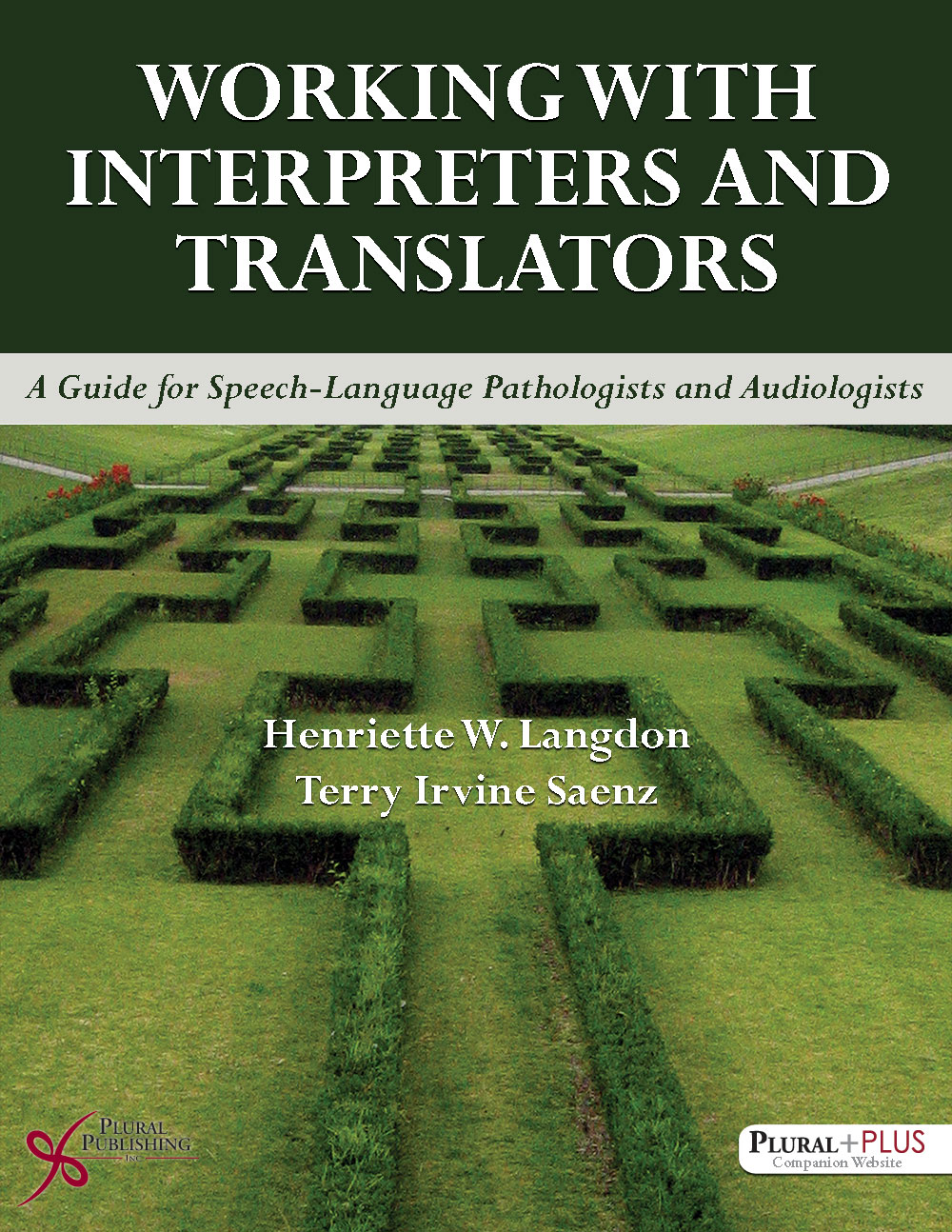
Working with Interpreters and Translators: A Guide for Speech-Language Pathologists and Audiologists
First Edition
Henriette W. Langdon, Terry Irvine Saenz
Details: 267 pages, B&W, Softcover, 7" x 10"
ISBN13: 978-1-59756-611-7
© 2016 | Available
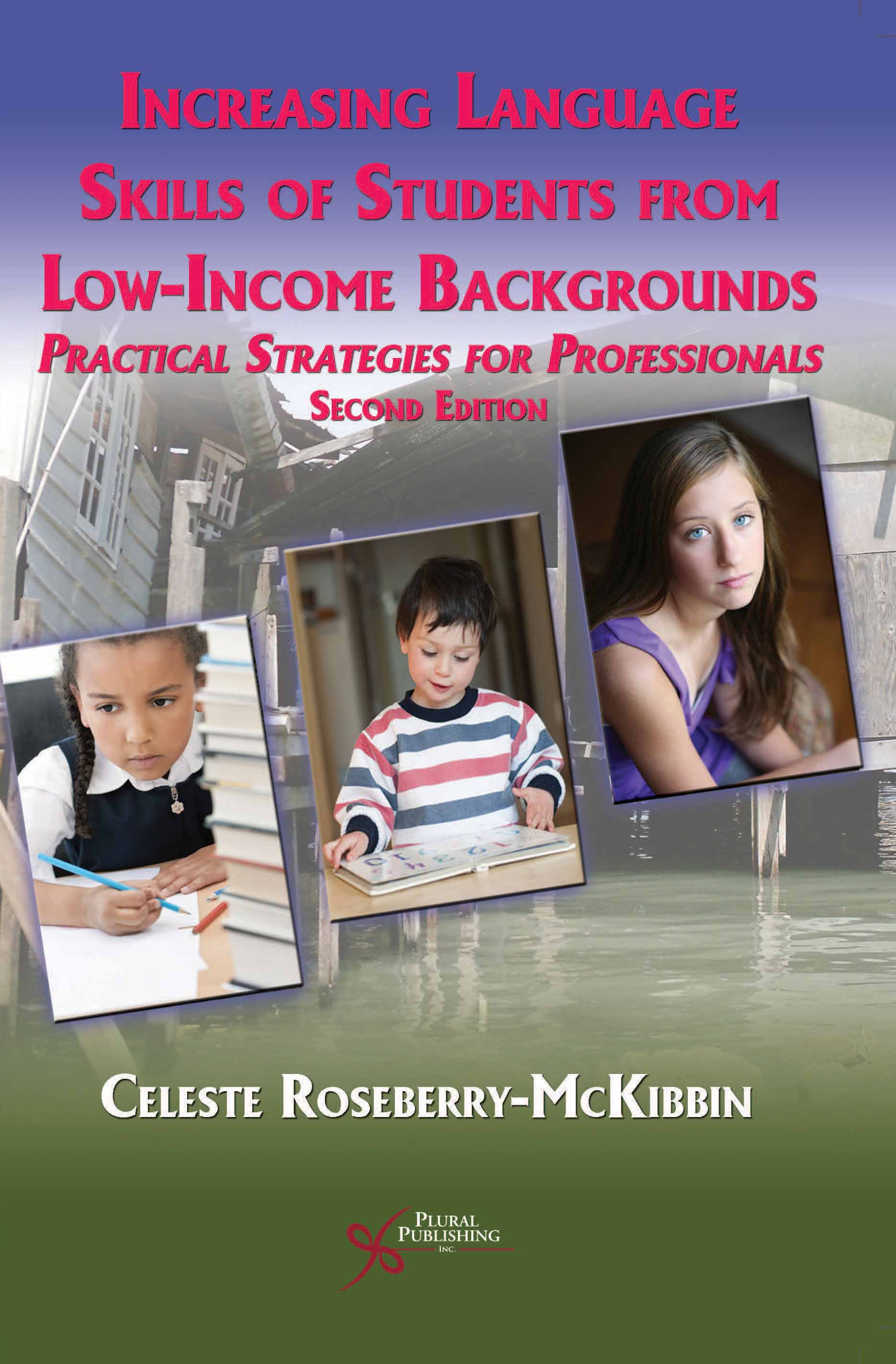
Increasing Language Skills of Students from Low-Income Backgrounds: Practical Strategies for Professionals
Second Edition
Celeste Roseberry-McKibbin
Details: 480 pages, B&W, Softcover, 6" x 9"
ISBN13: 978-1-59756-497-7
© 2013 | Available
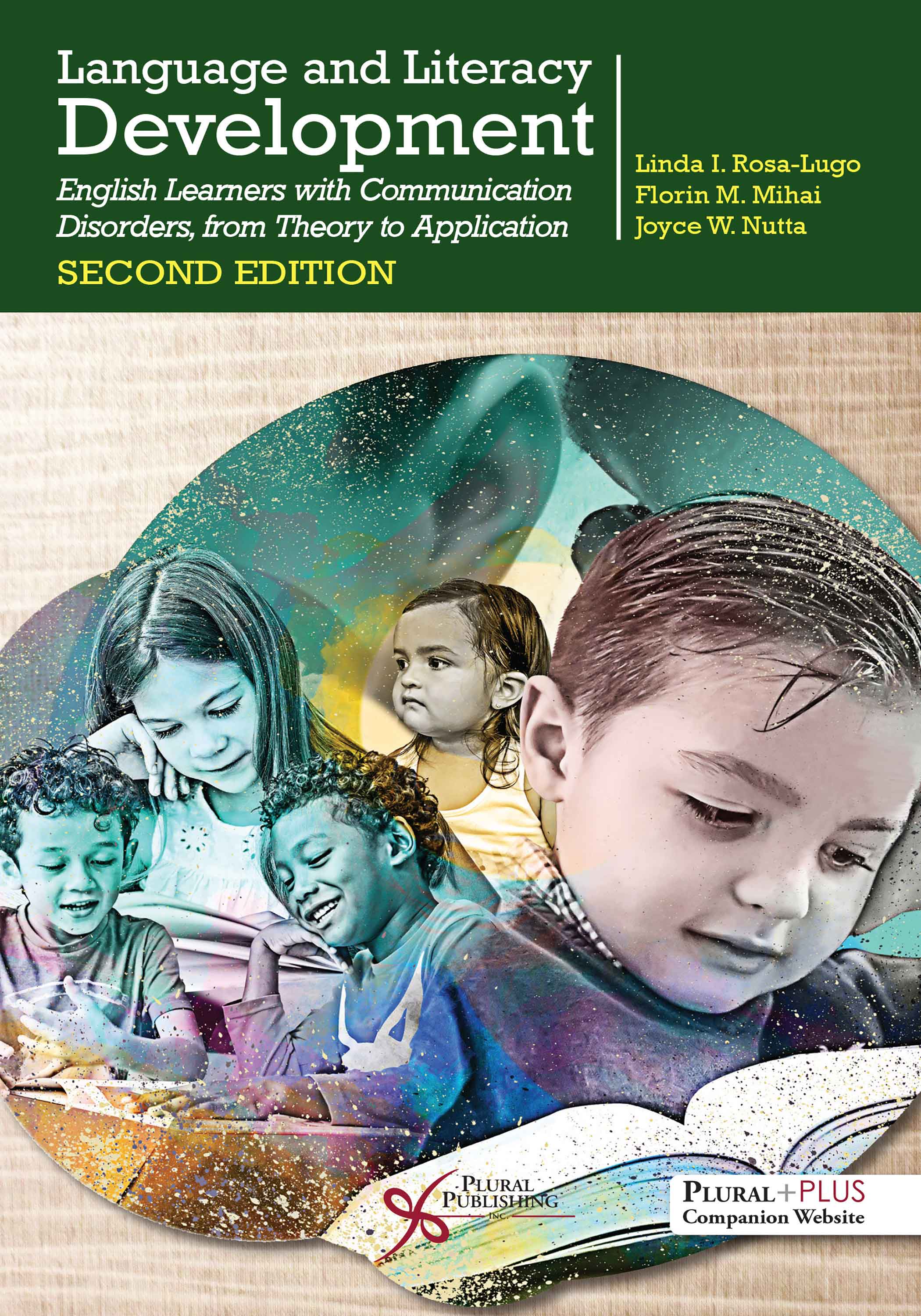
Language and Literacy Development: English Learners with Communication Disorders, From Theory to Application
Second Edition
Linda I. Rosa-Lugo, Florin Mihai, Joyce W. Nutta
Details: 432 pages, B&W, Softcover, 6" x 9"
ISBN13: 978-1-63550-153-7
© 2020 | Available
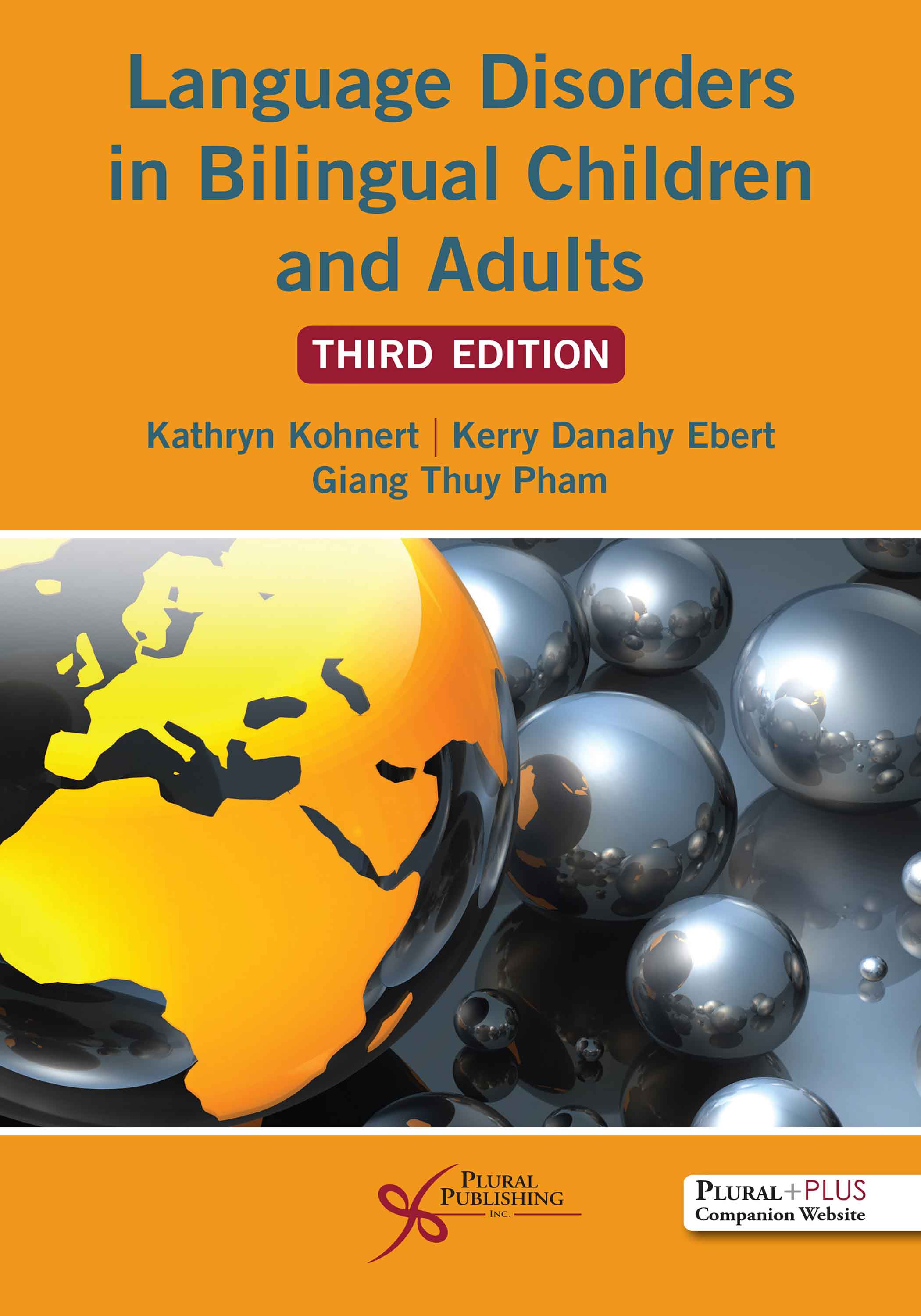
Language Disorders in Bilingual Children and Adults
Third Edition
Kathryn Kohnert, Kerry Danahy Ebert, Giang Thuy Pham
Details: 375 pages, B&W, Softcover, 6" x 9"
ISBN13: 978-1-63550-189-6
© 2022 | Available
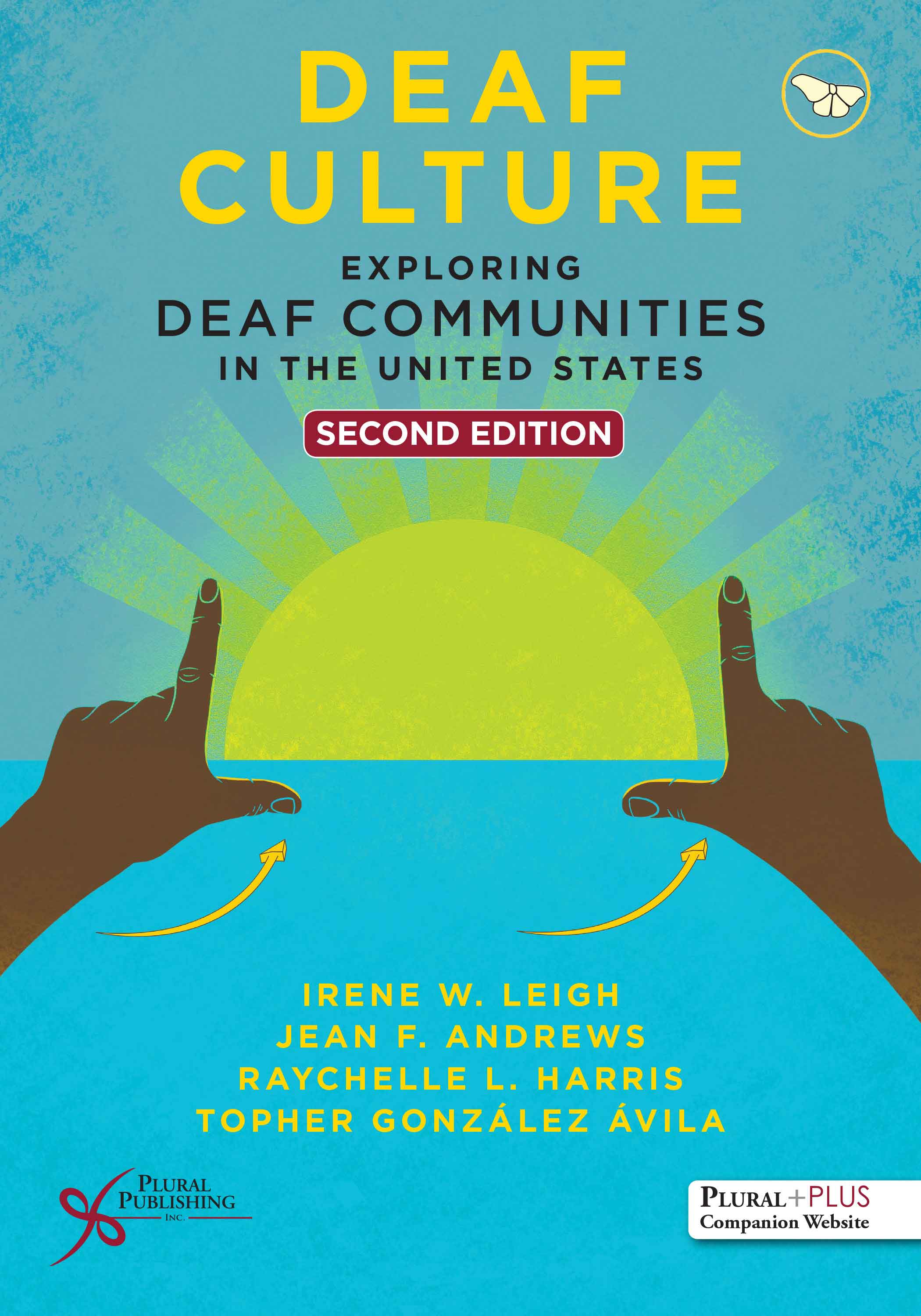
Deaf Culture: Exploring Deaf Communities in the United States
Second Edition
Irene W. Leigh, Jean F. Andrews, Raychelle L. Harris, Topher González Ávila
Details: 384 pages, B&W, Softcover, 7" x 10"
ISBN13: 978-1-63550-173-5
© 2022 | Available
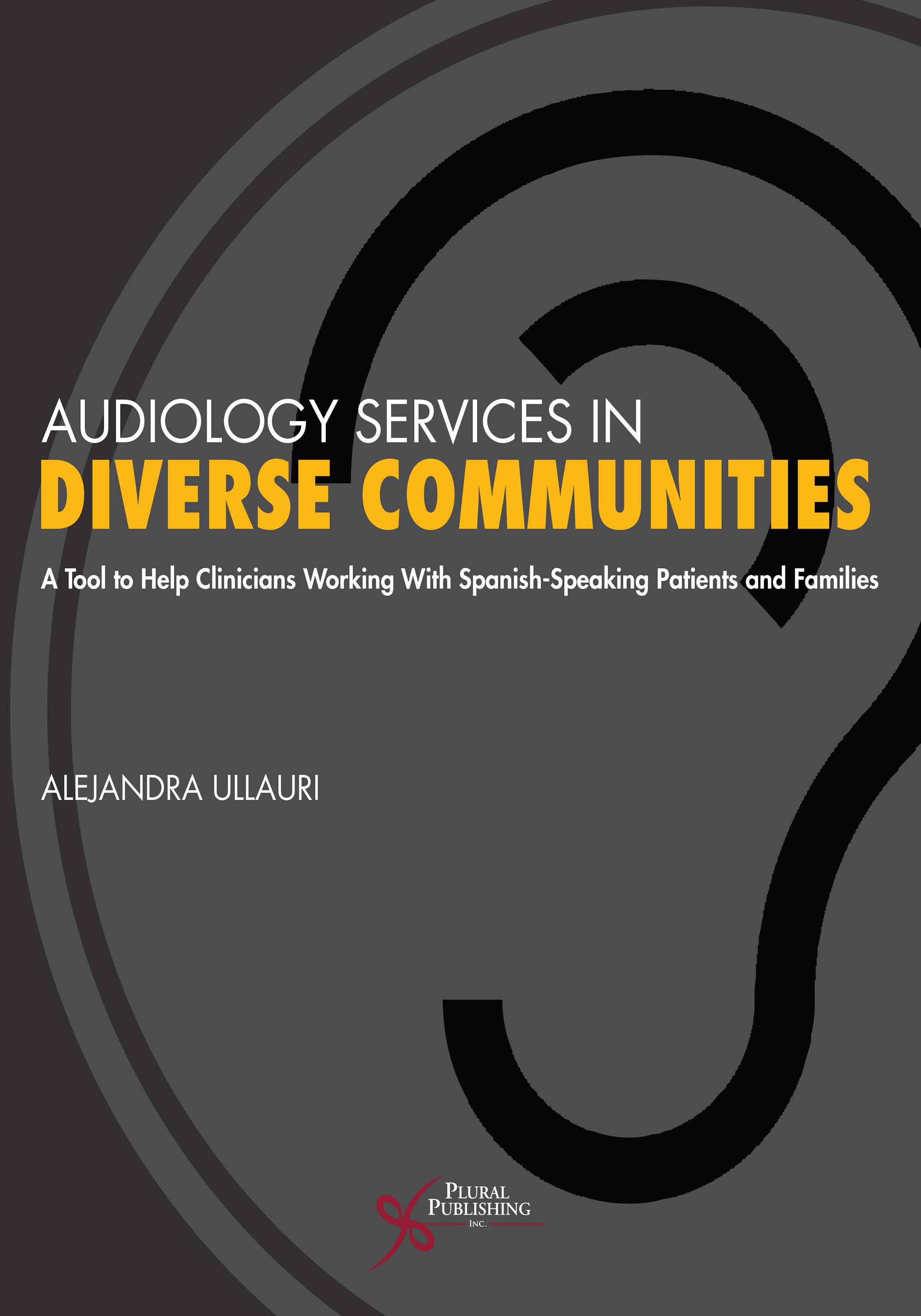
Audiology Services in Diverse Communities: A Tool to Help Clinicians Working With Spanish-Speaking Patients and Families
First Edition
Alejandra Ullauri
Details: 210 pages, B&W, Softcover, 8.5" x 11"
ISBN13: 978-1-63550-651-8
© 2022 | Available
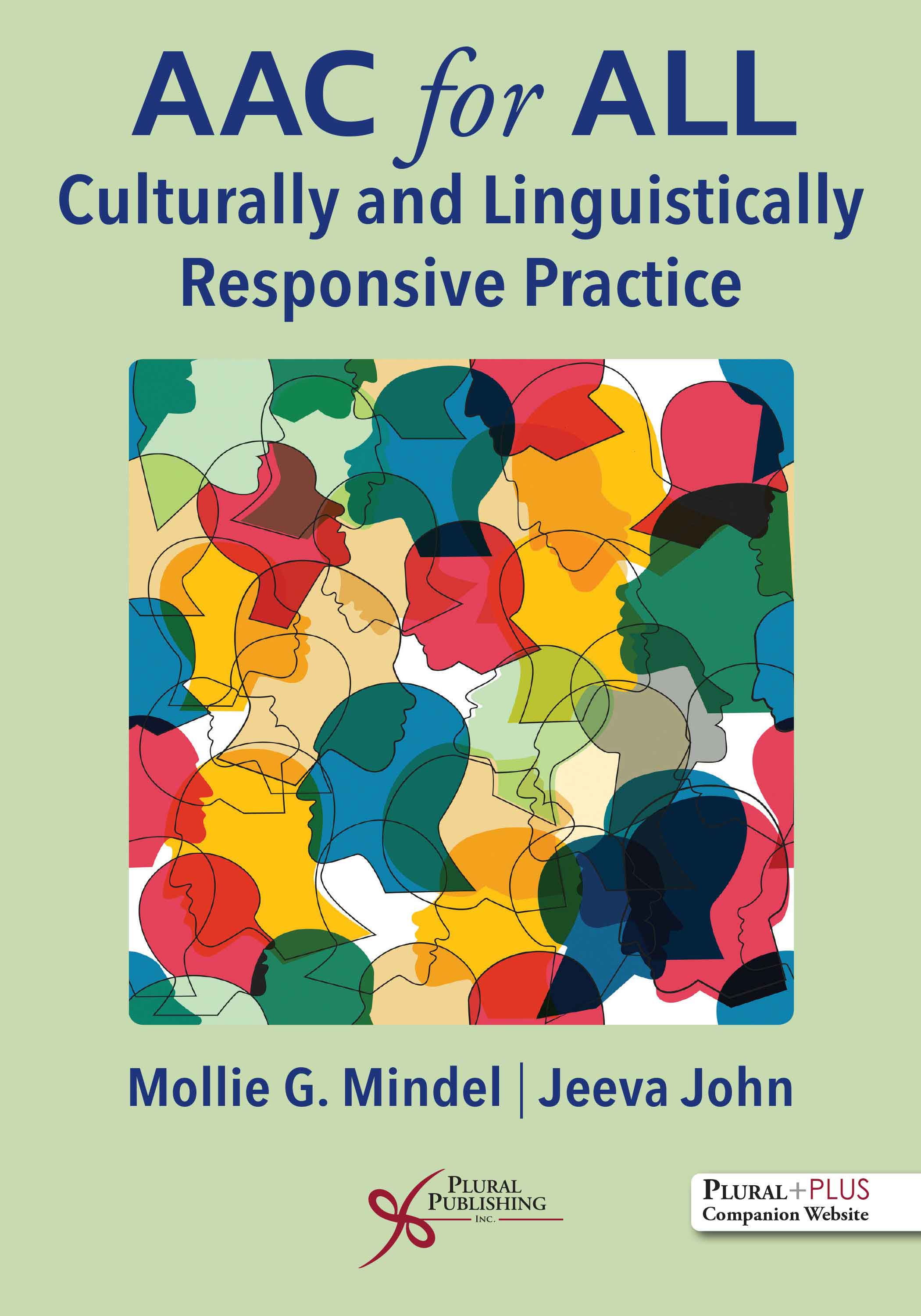
AAC for All: Culturally and Linguistically Responsive Practice
First Edition
Mollie G. Mindel, Jeeva John
Details: 200 pages, B&W, Softcover, 7" x 10"
ISBN13: 978-1-63550-285-5
© 2022 | Available
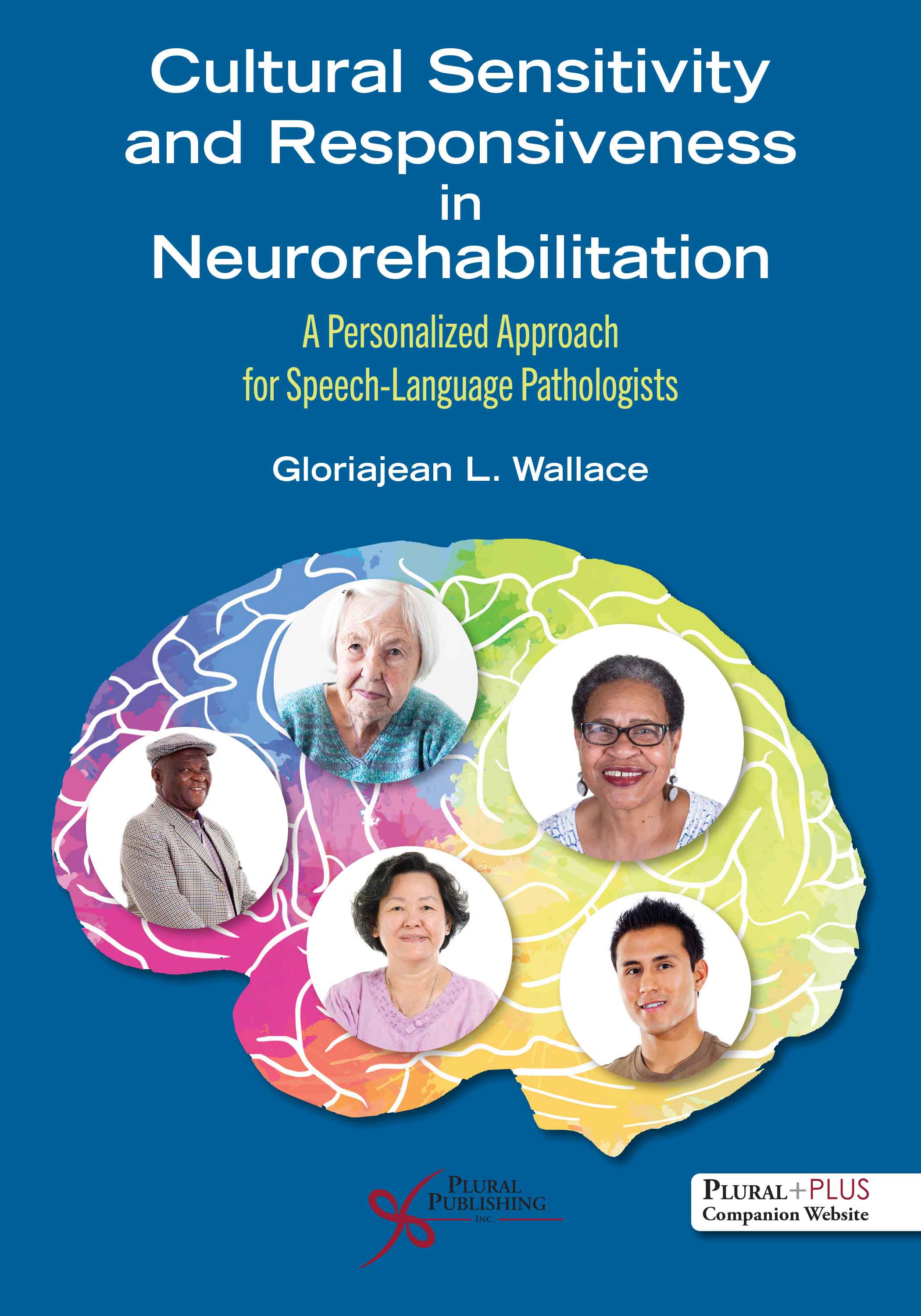
Cultural Sensitivity and Responsiveness in Neurorehabilitation: A Personalized Approach for Speech-Language Pathologists
First Edition
Gloriajean L. Wallace
Details: 853 pages, B&W, Softcover, 7" x 10"
ISBN13: 978-1-63550-032-5
© 2025 | Available

